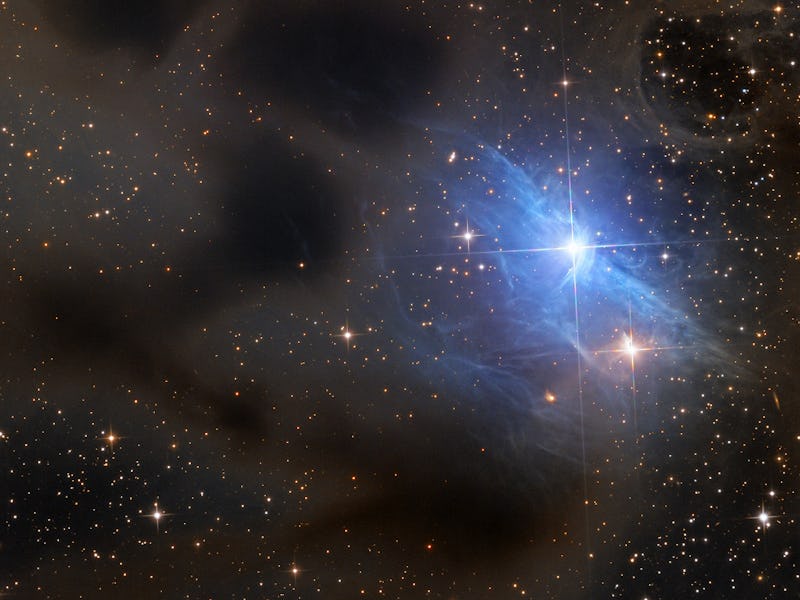If you peer off into the cosmic region where the nebula vdB 31 lies, you might think you’ve entered a carnival fun house. VdB 31 is located about 470 million light-years away in the constellation Auriga, a region has a ton of interesting astronomical phenomenon — the sixth brightest star in the galaxy, known as Capella; open star clusters Messier 36, 37, and 38; and another reflection nebula called the Flaming Star (IC 405). But, possibly the most interesting object in Auriga is the young star AB Aurigae because of its protoplanetary disk.
Disks of rock and dust like this one are thought to hold secrets as to how stars are born. From what evidence they have gathered, scientists believe the disks come from a massive cloud of molecular hydrogen that has collapsed under the weight of its own gravity. When this happens, the cloud condenses into a disk that expands outwards through a process of increasingly rapid rotation. Think of pizza dough being twirled around, flattening as it spins faster and faster.
Eventually all that spinning spawns a protostar. After 10 million years or so, the star will become so bright that its heat will likely push the cloud disk away with powerful solar winds.
In this image, from the Mount Lemmon SkyCenter in Arizona, we are seeing vdB 31 reflecting the blue light of AB Aurigae. This reflection is so bright that you can see it with your naked eye. It was identified in Sidney van den Bergh’s 1966 catalog of reflection nebulae, hence its name. But what drives even more curiosity to this nebula are the dark looming clouds of dust surrounding it.
These dusty clouds reflect the blue light of a nearby nebula.
Leftover from a massive supernova explosion nearby or simply drifting through, their origin is still unknown. But, when combined with the brightness of vdB 31, they look like empty holes poked into the sky.
The clouds are so dense that they block astronomers from seeing through them. But, judging by the ongoing activity of AB Aurigae, it is possible that there is an entire developing planetary system hiding in there.
Scientists are monitoring Auriga using the Hubble Space Telescope, hoping that one day, the clouds inch far enough that they may catch a glimpse of whatever wonders lie beyond them.
